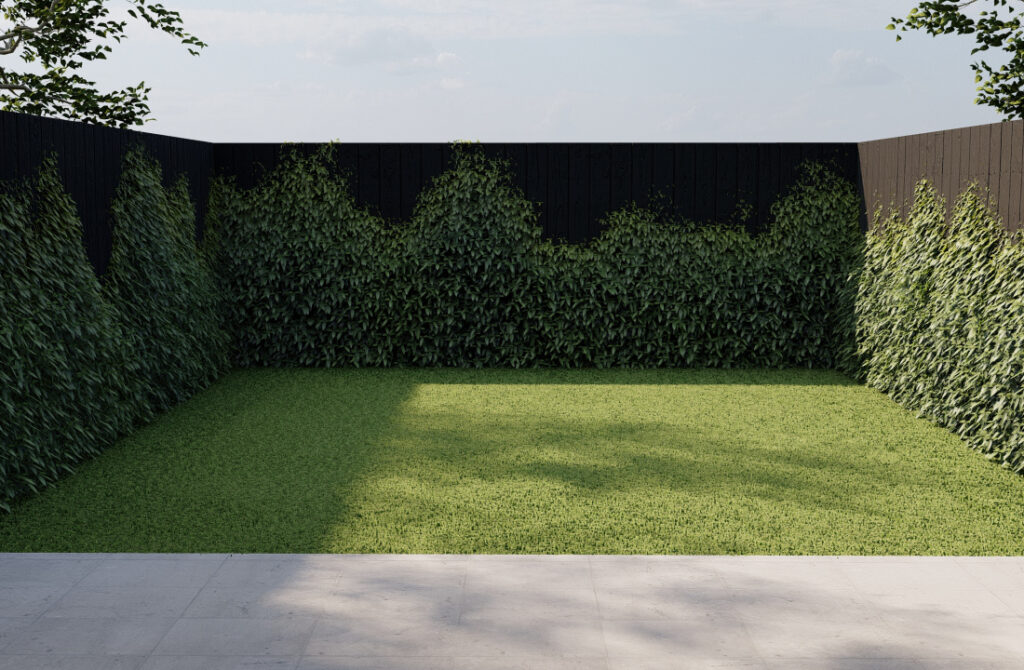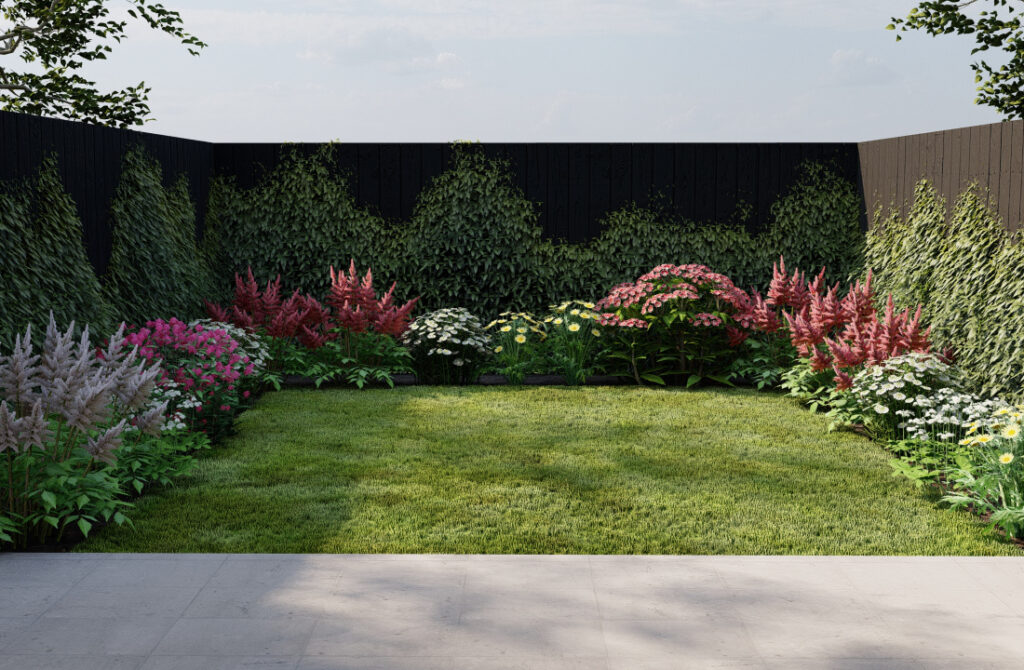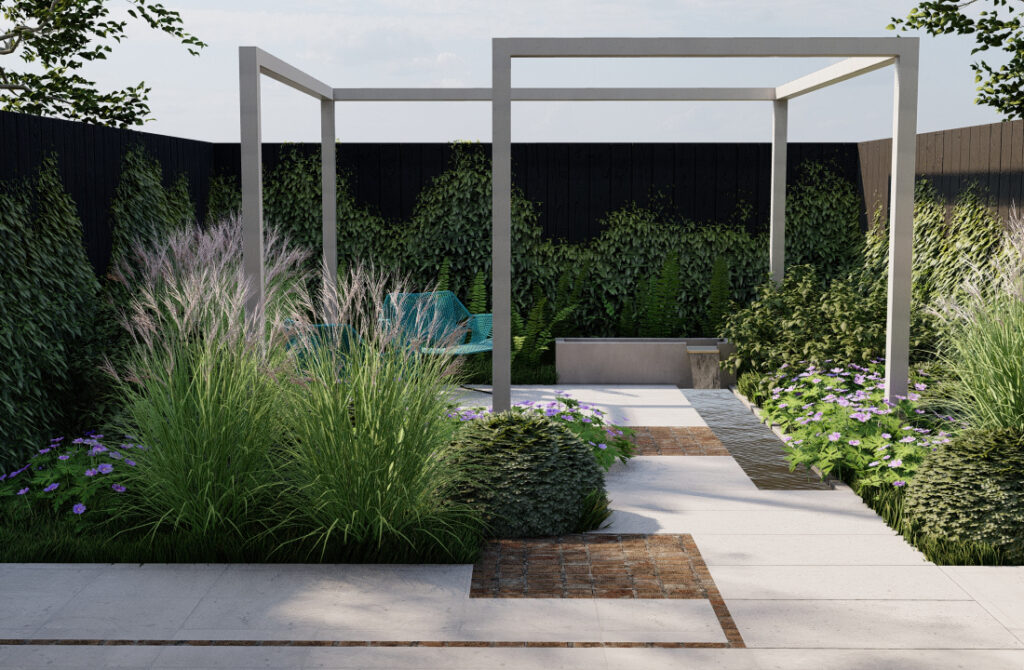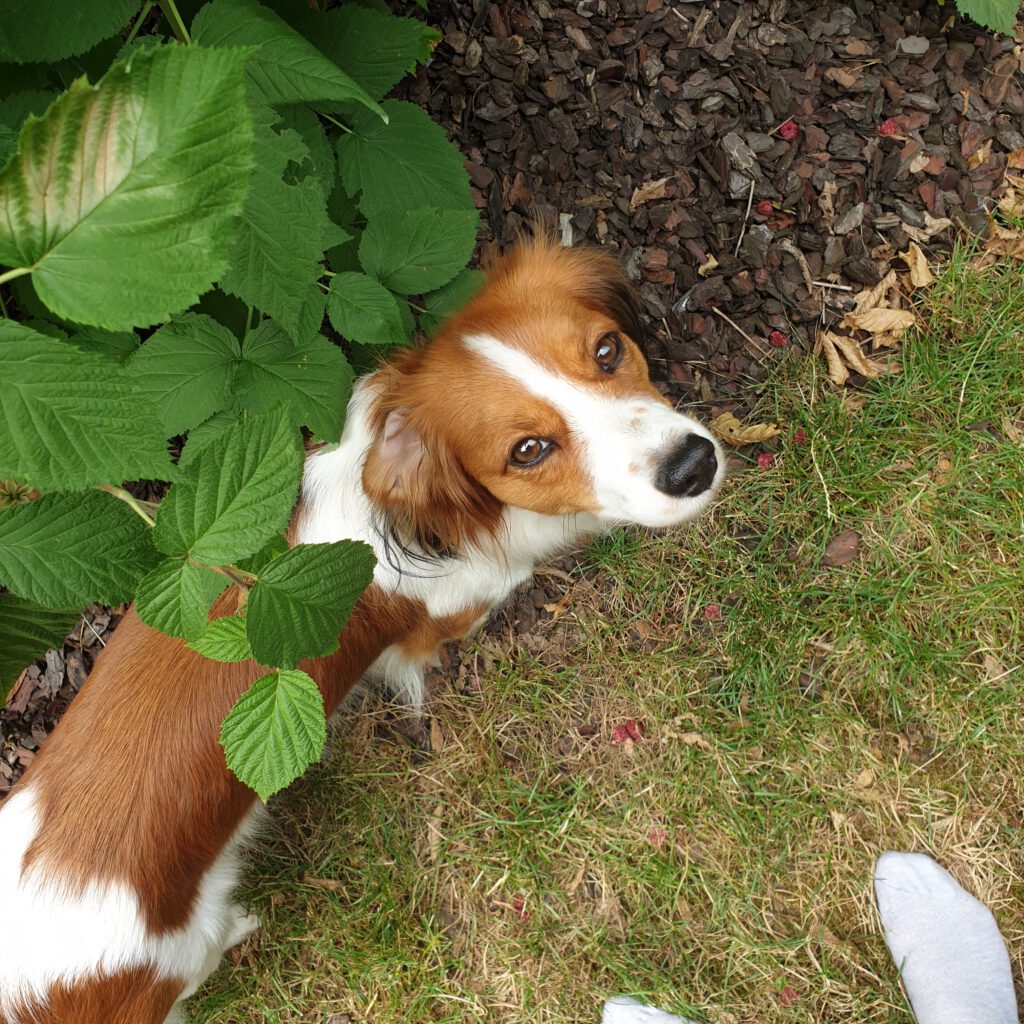Ah, that lush, soft, green carpet under the feet… Few other elements in landscape design are as misused as the lawn. Lawns are hungry for resources, require high levels of maintenance, and are hefty carbon emitters (sic!). Contrary to common beliefs, vast areas of mown grass make a garden look smaller than it really is. It is also usually not an optimal space for children to play. Small gardens are generally better off without a lawn. I listed 9 prevalent misconceptions associated with lawns to help you decide whether it is your thing or not.
Garden is a precious asset
Space is really precious. And freaking expensive, particularly in urban- and sub-urban locations. It is often the case that the surface of a garden exceeds the surface of the home within a property. In my view a garden with not much more than a lawn is similar to keeping one room of a house unfurnished and undecorated. Would anyone – except aristocracy in palaces – leave half of their house empty just because it takes too much effort to equip and clean it? Probably not. But I see it being done all the time with gardens. Actually, it is so prevalent that weird has become normal. I think that one important reason for this neglect are false beliefs around lawns that are so strongly rooted in common thinking that they are rarely questioned. Therefore I debunk nine most prevalent myths associated with lawns.
What do we get wrong about lawns?
Lawns have an image of a natural, sympathetic, and easygoing surface for play and leisure. Are they?
1. A big lawn will not make a garden look bigger
This is probably the biggest and most common misconception around lawns. But the opposite is true: empty space with no visual interruption is perceived as smaller than the same plot with interesting features. The eyesight travels over the lawn area in an instant because there is nothing to visually engage. Our brains are not very good at estimating the dimensions of outdoor spaces. We make judgements about spaces unconsciously based on patterns of lines, and relative proportions of features. If you have to walk to see the entire garden, it feels much bigger than the same area with grass. For example 10 m x 10 m (i.e. 100 m2) of turf does not look like much. On the other hand, that is the size of the famous Omotasenke Fuji’an tea garden in Japan.
If you want your small or medium garden look larger, my first advice is to replace (a part of) the lawn with planting beds.



Alternative designs for the same 6 x 8 m small garden with different levels of complexity: a lawn, a lawn enlivened with a flower border at the edge, and a modern 3-dimensional design without a lawn. In the third garden, the same space contains a water feature, secondary terrace, pergola, and mixed planting, which partially conceals the sitting area. The size of the front terrace, as well as camera settings, perspective and lighting are identical for all three models. In which garden is the fence the most obvious? Conversely, which garden feels the least confined? I also encourage to imagine how each of these gardens would look in winter.
2. Children don’t need a large lawn to play
That is a truly vast topic, which warrants a separate post, if not a book. So here I only touched a few crucial points to consider why a garden without a lawn may offer a better playground.
Above all, I would ask whether activities that require larger open space, like kicking a ball or running with wooden swords with peers, can be realised outside of the property. For example, at a local park, community premises, nearby field or dedicated playground. If so, can the precious garden space support other needs of a child? Research indicates that varied, interactive environment is necessary for optimal cognitive functions. Stimulating garden with diverse planting and structures instead of lawn is thus particularly beneficial for young children, whose brains are still developing. Dynamic changes that occur throughout a year and over the years make the garden a perfect place of constant discovery. A lawn, in contrast, is rather boring.
For most children, a garden can provide more sophisticated, enriching engagement with the outdoors than just a pure physical outlet. Children are naturally curious observers. If they have something to investigate, they will. That is why creating a garden that encourages wild life presence – insects, birds, small mammals – is a wonderful way of helping children to connect to nature in our progressively more virtual lives. Sowing, and growing their own flowers or vegetables – a miracle of making life – can be a transformative experience. It is no coincidence that many leading professionals in horticulture speak about childhood memories, when they cultivated own plot in parents’ or grandparents’ gardens.
3. Dog ownership does not imply large grassy surface

If turning a garden to a football field is borderline wasteful, what shall I say about converting the ultra-expensive property into a dog toilet? From my experience, a small lawn with some light shade for a dog to lie down is a really nice thing, but a Frisbee field is possible only in very large gardens. For a dog, who is used to walk at least several kilometres a day, how much movement can 200 m2 of garden offer? After all, you probably don’t go for a walk in your garden as well.
4. A lawn requires time and effort to maintain
Although most work associated with lawn maintenance is easy, it is frequent, noisy, time-consuming and unpleasant. The time spent on taking care of a lawn may sum up to many long hours every season, which could be devoted to something more pleasant. What do you prefer to hear on Saturday morning: buzzing of bees, or the sound of a lawn mower?
5. Lawns are not a natural landscape
The existence of a lawn depends upon persistent human activity. In nature, there are no lawns. Yes, there are grasslands, often maintained by sustained activity of grazing (domesticated!) livestock. However, the lawn, as we know it from the architectural landscape, is 100 % contrived, man-made element. It requires constant intervention from human beings and their machines. The traditional lawn is a monoculture, which is almost barren when it comes to invertebrate communities.
6. Lawns emit greenhouse gases
Lawn mowers need energy to operate – usually directly or indirectly from fossil fuels. Although grass as such captures CO2 and stores it in the soil, turf captures far less CO2 than shrubs or trees. Because new growth is regularly removed, nutrients must be continually added as fertilisers. These are also produced from fossil fuels with a hefty CO2 footprint. If clipped grass decomposes in anaerobic conditions, it releases methane, which has much stronger greenhouse effect than CO2. Finally, soil organisms turn excess of nitrogen from artificial fertilisers into nitrous oxide, a greenhouse gas 300 times more potent than CO2. One small garden with a lawn might seem insignificant, but when we sum up the whole area covered by regularly maintained lawns, the contribution to global warming is real. The power to put a small break in the downward spiral of climate change is in our hands.
7. Herbicides for lawn care are a health hazard
Most products that promise a weed- and moss-free lawn contain herbicides. Scientific studies indicate that domestic pesticides and herbicides increase the risk of lymphatic cancers for small children and pregnant women. It is very difficult to unequivocally prove the connection between a disease, which may take many years to develop, and certain chemicals. Unfortunately, the industry uses the lack of proof as assurance of safety. However, the lack of proof that something is harmful is not a proof of long-term safety. Exposure to even low amounts of various moderately toxic products over the years may result in synergistic or cumulative toxicity, which is rarely studied. My own practice is to err on a safe side and avoid such products whenever they are not essential.
8. Lawns require a lot of water, which we don’t have
An easygoing lush lawn needs what British weather is famous for – lots of rain. Continental climate with hot dry summers deviates from this ideal, while global climate changes exacerbate the problem. In central Europe, summer months with single days of rain spaced far between are becoming a norm. As a consequence, keeping lawns green depends now on regular irrigation. We deplete natural aquifers at alarming rates and already some areas in Germany and Poland face shortages and restrictions. Regular restrictions will come much quicker than we would like it to believe. Nobody will be able to pour water regularly onto a garden irrespective of the income. Mown grass that doesn’t receive regular watering turns into a dusty, prickly pan. Therefore the ways we arrange the outdoor space must adapt. Depending on where you live, a future-proof garden might be one without the traditional lawn.
9. Artificial grass is not an alternative
If, by any chance, a thought crossed your mind that if a lawn is such a bad idea, then the artificial turf would be an option, I assure you: it is one of the worst products that the landscaping industry came up with. Big environmental impact of the production and construction, complex cleaning with abrasive chemicals, or very high surface temperatures in the summer are only a pinnacle of a long list of problems associated with plastic turf. Artificial grass on a sunny day may reach temperatures over 60 °C. As such artificial turf is absolutely not suitable for pets and children.
Are you ready to create a garden without a lawn?
We desperately search for connections with the vanishing natural world. We often head for natural scenery on holidays, or weekend outings. So why not to turn our gardens into natural refugees for meeting the cultivated and the wild on a daily basis? We have that opportunity right behind our doors. We don’t need a special public transport ticket, we don’t care about fuel prices, we can be in the garden every day, irrespective of how busy our schedules are. Why not start today by letting go of the idea that a lawn is an indispensable feature in the garden? Although I think that very small gardens are more attractive without a lawn, you don’t need to give up the grass entirely. Simply reduce its surface to no more than 30 % of the garden and make more space for flowers, shrubs and trees.


